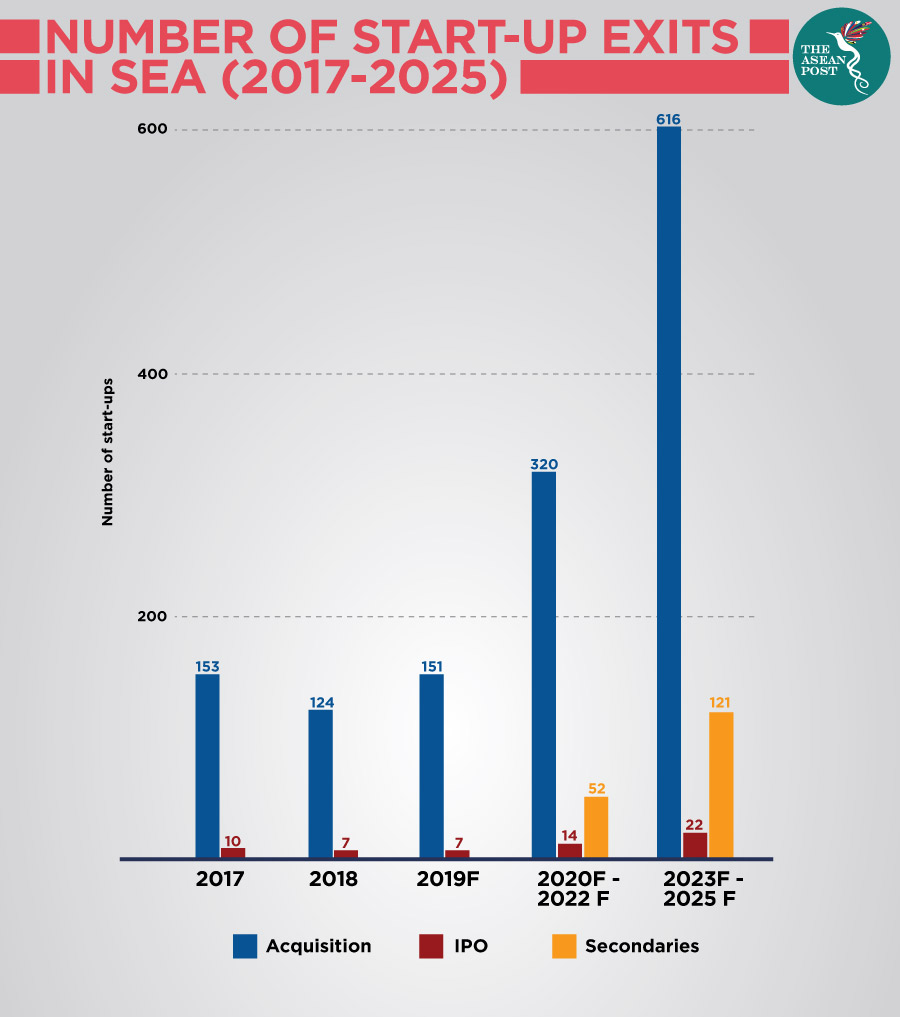The start-up ecosystem in Southeast Asia is thriving and maturing at a rapid pace, with capital increasingly being allocated to up-and-coming players. The rise in venture capitalists (VCs) and private equity (PE) investment in the region has helped produce Southeast Asia’s first set of unicorns (companies that rapidly achieve market valuations of US$1 billion or more).
As of 2018, ASEAN has 10 unicorn start-ups, but this number is set to grow in the next five years, with at least 10 more companies reaching unicorn status. Indonesia’s unicorns, GoJek and Tokopedia have contributed heavily to boosting the average deal size per start-up to US$220 million.
An increase in funding is significant, as more companies can reach growth stage and become acquisition targets. According to the 2019 ‘Private Equity Briefing,’ report by Ernst & Young, VC investment in the region increased in 2018 with 311 announced deals valued at US$5.2 billion compared to 230 announced deals worth US$4.1 billion in 2017.
“There is certainly no better time to be an entrepreneur in the thriving entrepreneurial ecosystem of Southeast Asia,” said Claudia Zeisberger, professor of Entrepreneurship & Family Enterprise at INSEAD. She adds that the “growing interest of corporates in the start-up space is certainly a development to watch; they may offer an additional exit avenue or fill funding gaps in certain countries.”
Increase in exits
Exits for start-ups are when founders get returns from their hard work. Exits also provide capital to start-ups to return money to their investors. Across the region, the number of successful start-up exits has been rising, and regional tech firms drive most of these exits. A 2019 report by Golden Gate Ventures (GGV) and INSEAD titled ‘Southeast Asia exit landscape: a new frontier,’ estimates that 700 start-ups will exit between 2023 and 2025. The GGV report projects a substantial increase in exits after 2022 due to end of fund life for early venture funds (those raised in 2010 to 2012).
There are many exit strategies for start-ups, such as merger and acquisition (M&A) and initial public offering (IPO). IPO is where a company starts to float on a stock market and sells a significant number of its shares to institutional and non-institutional investors. M&A implies a merging with a similar and larger company that is looking for complementary skills in the market, where buying a smaller start-up is an efficient way to develop a product.

In Indonesia, most founders’ exit strategies involve their companies being bought out by state-owned enterprises. These exits are called ‘acquihires’ where buyers absorb talents and the products. Another form of exit route for start-ups to go public is through the Indonesian Stock Exchange (IDX). In 2017, Kioson, an Indonesian e-commerce start-up, went public on the IDX, successfully raising US$3.3 million. However, going public is a new concept for tech companies in Southeast Asia.
Unicorns are also becoming acquirers, driving the future exits of start-ups. Between the years 2017 to 2019, GoJek acquired seven start-ups in Southeast Asia. Unicorns acquiring smaller start-ups makes sense because it allows them easier access to new markets while consolidating their strong positions in home markets.
“Pipeline to exit has emerged clearly in the region by now. The first stage involving smaller acquisitions is – everywhere – as we all have seen. The second stage, the rollup of local start-ups into a consolidated, significant regional player, is picking up, with regional tech giants leading the pack with over 28 acquisitions made since 2014,” said Justin Hall, Partner at GGV.
Unusual but not unheard of, are companies that can establish a robust business model and scale but chose to stay independent and reinvest the profits back into the company.
Burn out
Start-up failures are more common than success stories. According to a 2019 CB Insights on ‘Startup Failure Post-Mortems,’ 70 percent of start-up tech companies fail, usually 20 months after raising their first financing. Although the real reasons for start-ups to flame out is hard to uncover, intelligence platform, CB Insights has identified the top 20 reasons start-ups fail, including not having the right team (23 percent) and poor marketing (14 percent).
Based on the study, 42 percent of start-ups fail due to ‘no market need’, where start-ups do not tackle problems that serve a market need. “Start-ups fail when they are not solving a market problem,” said founders of Treehouse Logic, a visual configurator platform company. Some start-ups get tunnel vision and spend too much time building solutions for themselves without getting feedback from potential customers. In Southeast Asia, the competition is higher as more capital and talents are going into the same set of problems.
29 percent of start-ups cited money issues and running out of funds as reasons for their failure. Start-up founders rarely think about a work-life balance and often run a high risk of burning out, accounting for at least eight percent of start-up failures.
Start-ups that can cut losses where necessary and re-direct efforts when they hit a dead-end are highly likely to succeed. Having a reliable, diverse and driven team is vital so that responsibilities can be shared. Additionally, the number of possible exits with larger and frequent funding rounds will continue to propel the entire tech start-up ecosystem in Southeast Asia.
Related articles:
